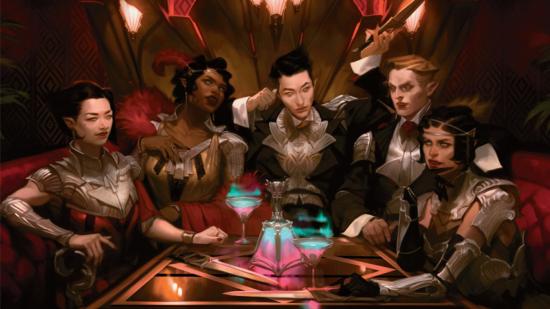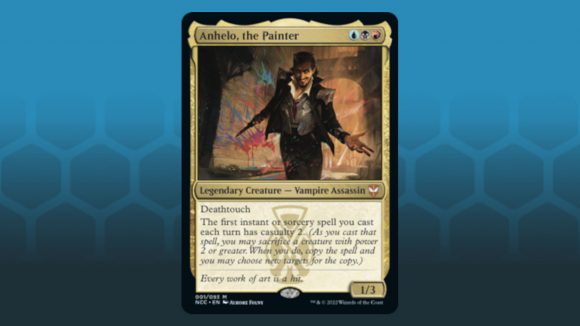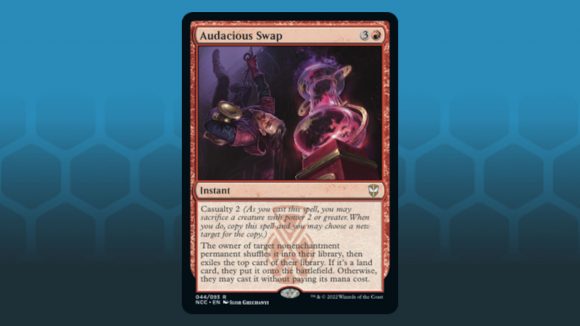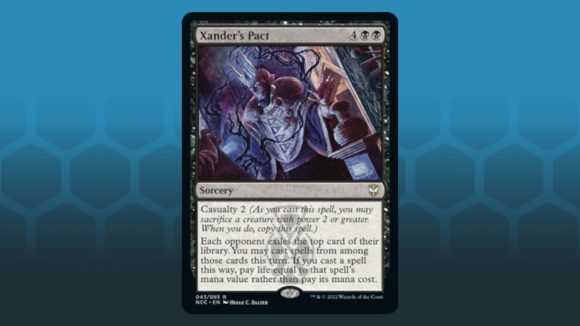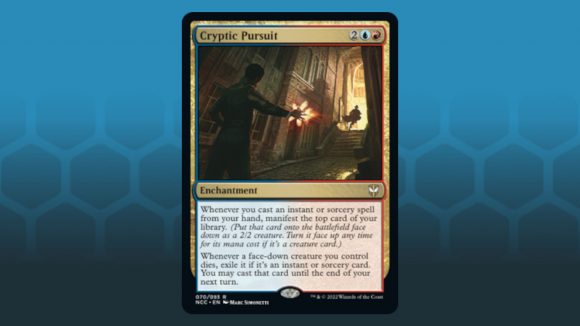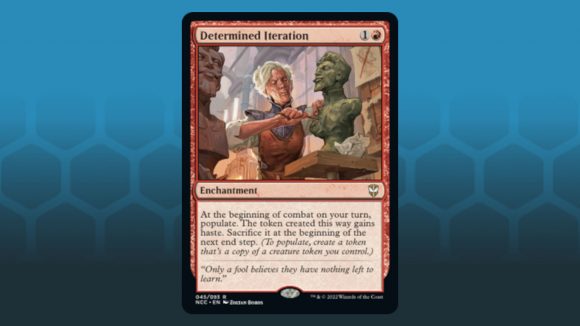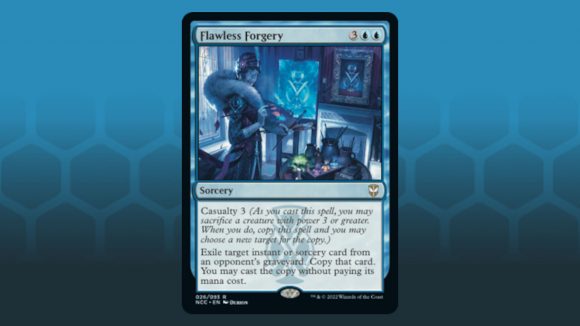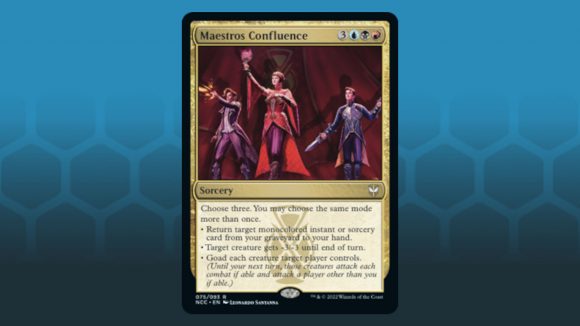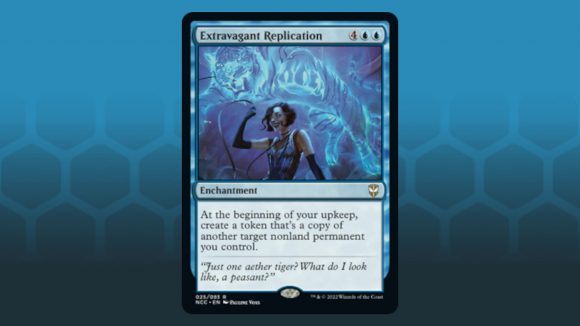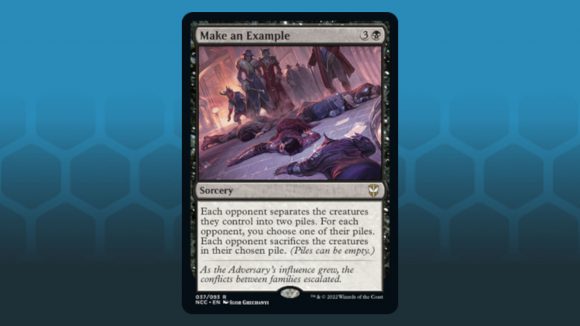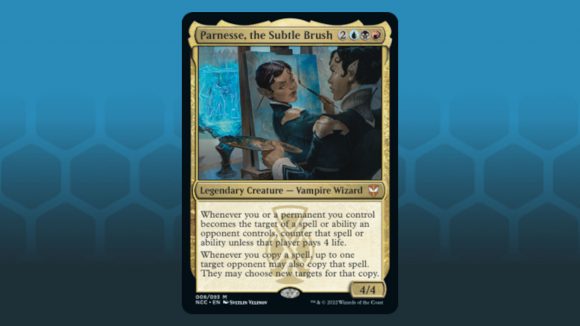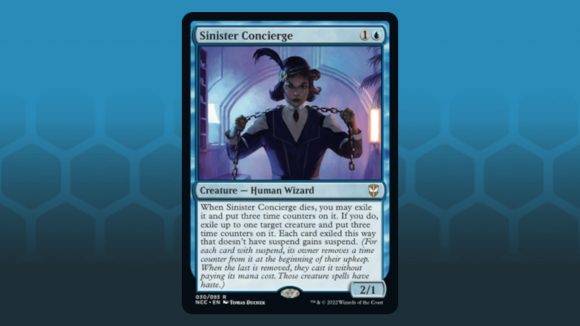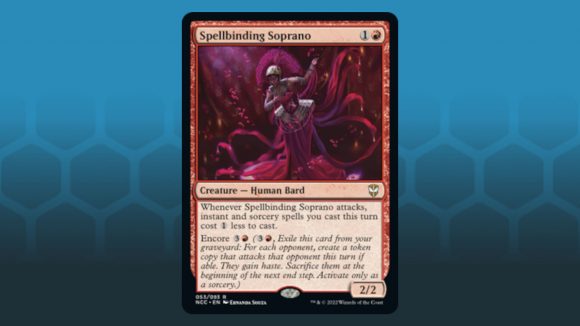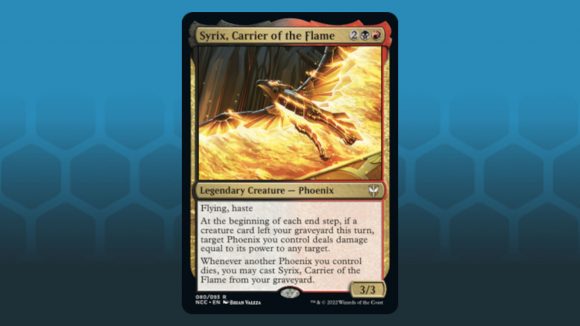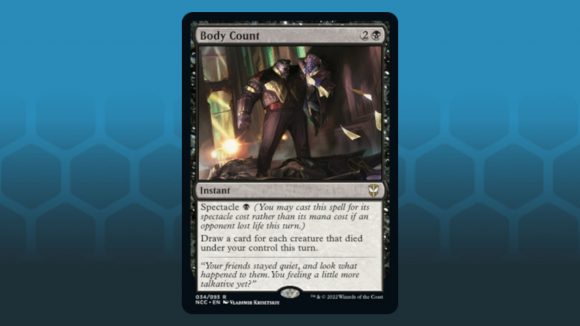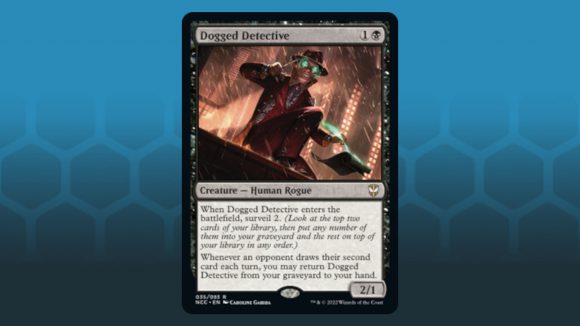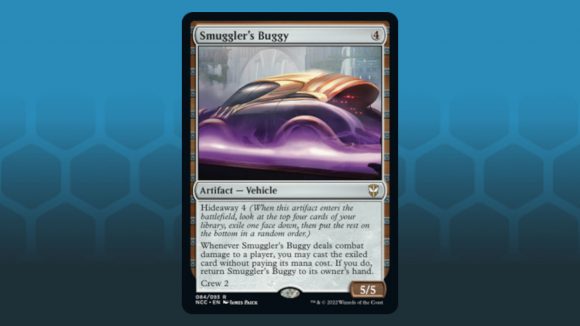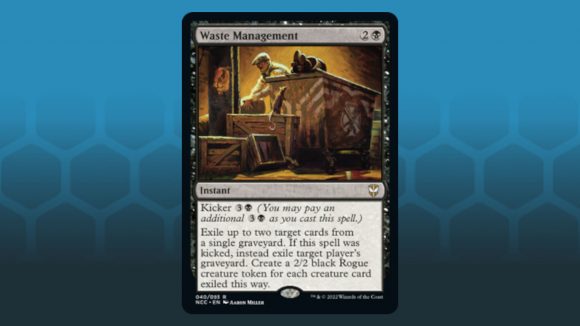The latest Magic: The Gathering set, Streets of New Capenna, is just around the corner (lurking with knife in hand) and with the Standard cards release on April 29 comes a group of five Commander decks. Today, Wargamer unveiled the Maestros Massacre Commander deck (which you should definitely check out). But we also recently sat down and had a chinwag with the person who led design on the deck, Senior MTG designer Gavin Verhey.
Gavin Verhey told us that the beautiful thing about the Maestros Massacre EDH deck is its subtlety. Much like a Maestros assassin, this Commander deck has the ability to strike suddenly, appearing harmless until its user casts an enormous spell to suddenly win the game out of nowhere. Its main commander; Anhelo, the Painter is a true powerhouse with his Casualty ability, while Parnesse, the Subtle Brush enables a sneakier, more political playstyle.
Verhey also gave us a behind-the-scenes glimpse into the design work he did on the deck. He explained how the deck was envisaged, the choices that were made as it developed, and the challenges that had to be overcome during the process.
Wargamer: Let’s start with an intro to the Maestros Massacre deck – how would you describe it in three words?
Gavin Verhey: I think my three words are: controlling, explosive and subtle. And I can expand on that a little bit. What I would say is the Maestros deck does a great job helping police the table. It’s got a lot of removal spells in it, it’s got some great ways to clear the board. Because what the deck really wants is in the late game to kill almost out of nowhere by using these big Casualty spells.
For example, there’s the flashback spell Army of the Damned, where you make 13 Zombies. And when you Casualty that, you get 26 Zombies. You can go from having Anhelo in play, and casting that spell, to having a huge hoard out of nowhere. You copy [the deck’s Casualty spells] once or twice and can totally turn the tide of the entire game.
So there’s a lot of stuff in there that allows you to just explode out of nowhere. But it’s subtle, because people aren’t expecting it. They’re like, ‘Oh, the spells player isn’t really doing much over there.’ Meanwhile, you’ve got a hand of six or seven cards, and you’re crafting one fundamental turn. There are numerous times playing this deck, I would go from being the least threatening player to ending the game in a couple of turns. And it can be very subtle that way.
What was your starting point when putting together this deck?
GV: So early on, we knew we were going to do five decks, one for each of the crime families. And what we wanted to do was actually not directly do what it was doing in the main set.
So each of the five crime families have their main set mechanic, we wanted to tie into something that was like sideways to that mechanic. So for example, the Bant deck uses counters – which is the Shield counter thing – but it uses all counters.
In the Maestros’ case we’re like: Well, Casualty is this new ability, and it’s on all Instants and Sorceries, except for Ob Nixilis, The Adversary so, therefore, doing an Instant and Sorcery deck made a lot of sense. So we started with that point.
And then the question was: ‘Okay, well, what is the overlap between Casualty – which wants you to have creatures – and Instants and Sorceries. It’s a very hard overlap to find, actually. And what we found were token making spells are the perfect overlap between Casualty, and Instants and Sorceries.
So we started off with being almost a more tokens-y deck, with a lot of tokens that you were Casualty-ing away, and there’s still some of that left in the deck. But over time, it definitely became more – cards that recur out of your graveyard that will come back into play, and allow you to sacrifice them over and over again.
For example, there is Bloodsoaked Champion, it’s a single black mana for a 2/1. And if you attack this turn, you can pay two mana to bring it out of your graveyard into play. It comes back over and over and over again, so you can keep sacrificing it. And there’s some new cards, there’s a card that Surveils and then comes back from your graveyard to your hand, and all kinds of ways for you to repeatedly play creatures and then sacrifice them to casualty. And that’s kind of the real key of this deck. A little recursive in that sense, and still has some of those tokens that I mentioned.
What’s your favourite thing about the deck – are there any pet cards or fun interactions that you want to show off?
GV: Well, my personal favourite card in the deck is Extravagant Replication. It’s a card that I pitched and was printed almost exactly like I originally pitched it, which is not very common in design, cards go through so many iterations.
This is a card where you choose one of your nonland permanents to make a copy of it. And every turn you get to pick whatever your coolest thing is, and copy it, and my pitch was, it’s awesome to be able to get a bunch of tokens to then casualty with them. Or once you have something awesome in play, it’s fantastic to be able to make copies of that and continue to grow bigger and bigger as a force.
And I love it so much, because it represents the deck so well, I said it’s very subtle, right? This is an enchantment you play, it doesn’t do anything right away. On your first couple turns, you might copy a mana rock or artifact, very subtle in its power. But as the game goes on, suddenly you’re copying these huge things that you put out, and it completely turns the tide of the game. And my favourite thing about this deck is its subtlety. You know, I can’t honestly remember a precon deck we’ve made that can turn on a dime as quickly as this deck can. It’s been a little while, and I find that very, very, very fun.
Anhelo is looking pretty spicy, but what does the other Commander that can lead the deck, Parnesse, add to it?
GV: Yeah, absolutely. So every one of these decks has its front-facing commander, in this case Anhelo, and a backup commander. And the goal with the secondary commander was something that would take the deck in a very different direction. Because if you want the best Casualty commander, your front-facing commander is going to be that one for you.
So what’s an unusual thing we could do? And one of the things that I mentioned, is that there’s politics, we wanted to really play into the political feel of these decks. And so what Parnesse does, is, it’s a very political commander, right? You give your opponent’s copies of your spells instead of yourself, but it costs them life if they want to target your stuff. So they’re mostly going to get their copies and then mess up each other, which is exactly what you want them to do. And you feel like you’re playing this political game.
Take charge: The best MTG Commanders
So it still plays with the theme of Instants and Sorceries well. But you’ve turned from this ‘copying a bunch for yourself’ deck, to giving them copies that mess up your opponents’ – hopefully – decks, which is a very different style of gameplay. But we think some players are gonna really enjoy that.
It takes a certain kind of player to enjoy that. And one of the things that I love about Magic is that you can have these different cards that appeal to different people, and some people will open up the deck and say: ‘Anhelo, 100% every time for me. And some players will see Parnesse and be like: ‘Oh, this is the one for me.’ I think that’s very cool.
Were there any challenges encountered while designing the deck?
GV: Yeah, I’ll mention a couple that I think are quite interesting. The first was that I talked about the tokens thing earlier. And originally, it was a very heavy token strategy? But what we found in Commander is if all you’re doing is copying your token spells, like, say you play make a bunch of 2/2s, and then you copy it. Well, even six 2/2s in Commander is not that strong compared to what a lot of other decks are doing.
So we kept some of our strongest token stuff in there, but we also really leaned on some of those big expensive spells that you wanted to copy, because that’s also the most exciting stuff to copy in your deck anyway.
One of the biggest challenges is with these centerline Commander decks that are attached to a set like the New Cappenna ones. They’re very cool. But one of the tricky things that’s happening is the main set has been designed at the same time you’re designing these Commander decks, right.
And so Casualty, the mechanic, actually underwent a few changes during the design that we had to adapt to. For example, Casualty ended up with a number on it, Casualty, one, two and three. And that wasn’t there, the entire time we were designing the Commander decks, you could just sacrifice a creature to copy. And then there was a point where you could mix and match. So Casualty two would mean sacrifice a total power of two. So you could sacrifice two 1/1 tokens to fuel your casualty to spell, where now it has to be one creature.
So there were some challenges with making sure that it lines up with the main set. But of course, I’m happy we did. And it really makes it feel like a whole package, the Commander decks and the main set together.
How does Maestros Massacre fare against the other Commander decks?
GV: Yeah, one of the fun things about Commander, is because of the political nature and the multiplayer nature of it, you’re never sure – even if one deck is theoretically stronger, it doesn’t matter if the politics at the table are not going in your favour, right?
I’ll say that I had a lot of success with this deck, playing it, because it is so subtle, and often in Commander, the trick is to never look like the threat. And this deck almost never looks like a threat until it’s too late, and that’s the delightful part of it.
Hush-Hush: A guide to MTG Secret Lairs
The key to me is making sure people do not destroy your commander. If you get Anhelo out it doesn’t look like it’s going to do that much, and so you can start kind of building up toward your big spell or do some really cool stuff with some of your mid range spells.
But if you play against some sly opponents who know they gotta kill your commander on sight, it’s gonna get a little harder for you. So I found I would often win or do quite well my first couple games at a table, then once they knew what was up they would have me a little pointed. Which I think is cool for replayability.
Any last words on the Commander decks?
GV: I’ll just say that, you know, these Commander decks were a blast to work on. And I really hope everyone out there enjoys playing them, we took a lot of time to balance them.
And we made these decks basically entirely during lockdown. So it was so much fun to really band together, as a small team and say, ‘Hey, we got to make these decks. I know we’re in this lockdown situation, let’s make something incredible.’ And I’m really proud and happy with what we did.
And I’ll shout out as well, Chris Mooney, who was the lead designer of the whole product. I lead designed the Maestros deck, but they lead designed the entire product, and they did a fantastic job on it. So I want to give a big shout out to them, as well as the rest of the team!
